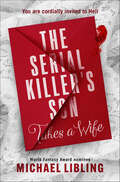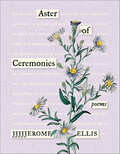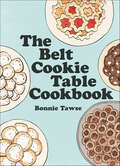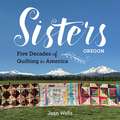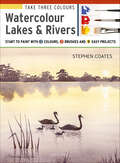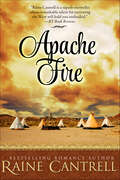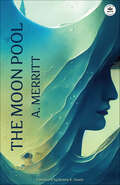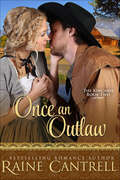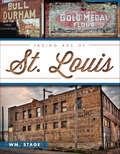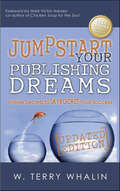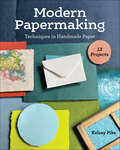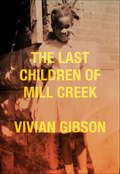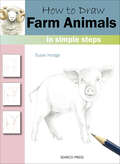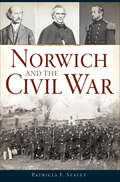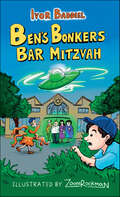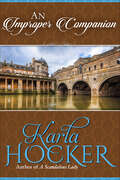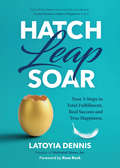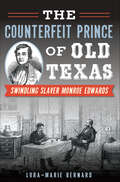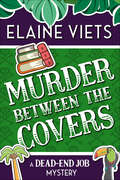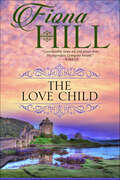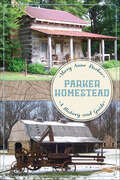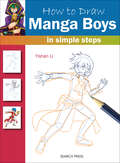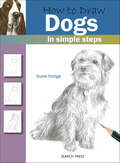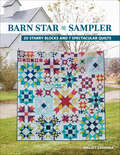- Table View
- List View
The Serial Killer's Son Takes a Wife
by Michael LiblingSURVIVAL TIPS FOR SONS OF SERIAL KILLERS 1. Change your last name. Be forgettable. 2. Take comfort. Serial killing is not hereditary. Not usually, anyhow. 3. Never contact your parents, whether on Death Row or elsewhere. You are messed up enough. 4. Choose a dull career. Run an ice cream parlor, for instance. 5. Do not fall in love. Sooner or later, she will ask to meet your mom and dad. 6. Trust no one. Not even her. 7. Do not get married. It cannot end well. 8. Keep what you know to yourself. You were just a kid, after all. 9. Do not return to your boyhood home. No one has forgotten anything. SURVIVAL TIPS FOR READERS: Watch your back. Lock your doors. Be courteous to everyone. Yes, everyone. This is your only warning.
Aster of Ceremonies: Poems
by JJJJJerome EllisA polyphonic new entry in Multiverse—a literary series written and curated by the neurodivergent—JJJJJerome Ellis’s Aster of Ceremonies beautifully extends the vision of his debut book and album, The Clearing, a “lyrical celebration of and inquiry into the intersections of blackness, music, and disabled speech” (Claudia Rankine).Aster of Ceremonies asks what rites we need now and how poetry, astir in the asters, can help them along. What is the relationship between fleeing and feeling? How can the voices of those who came before—and the stutters that leaven those voices—carry into our present moment, mingling with our own? When Ellis writes, “Bring me the stolen will / Bring me the stolen well,” his voice is a conduit, his “me” is many. Through the grateful invocations of ancestors—Hannah, Mariah, Kit, Jan, and others—and their songs, he rewrites history, creating a world that blooms backward, reimagining what it means for Black and disabled people to have taken, and to continue to take, their freedom.By weaving a chorus of voices past and present, Ellis counters the attack of “all masters of all vessels” and replaces it with a family of flowers. He models how—as with his brilliant transduction of escaped slave advertisements—we might proclaim lost ownership over literature and history. “Bring me to the well,” he chants, implores, channels. “Bring me to me.” In this bringing, in this singing, he proclaims our collective belonging to shared worlds where we can gather and heal.
The Belt Cookie Table Cookbook
by Bonnie TawseA compendium of traditional midwestern cookies &“along with the poignant and heartwarming stories behind each recipe&” (Mary Bilyeu, Toledo Blade). The Belt Cookie Table Cookbook celebrates the tradition of the cookie table with forty-one classic recipes from authentic Mahoning Valley cookie tables and cooks. What&’s a cookie table? Funny you should ask! The cookie table is a tradition beloved by residents of Youngstown, Pittsburgh, and parts in between. It has its roots in a time when wedding cakes were far too dear for newly arrived immigrants to purchase. Instead, family and friends showed their love for a bride and groom by baking from scratch hundreds (sometimes thousands) of cookies and other small sweet treats to be shared at the reception. The Belt Cookie Table Cookbook is an international baking guide, including cookies from different cultures, cookies with different textures, spices, shapes, and backstories. Simple cookies, ridiculously indulgent cookies, experimental cookies―they&’re all here. And most of all it shares the tradition of the cookie table, a heartfelt way of building community that has endured through generations. In the tradition of the community cookbook, The Belt Cookie Table Cookbook is a must for any kitchen large or small, and a great gift for bakers and home cooks.
Simple Whatnots III: A Third Serving of Satisfyingly Scrappy Quilts
by Kim DiehlThe bestselling author and fabric designer shares instructions for 18 fun-to-complete, petite quilts packed with style! Bestselling author Kim Diehl is at it again with spectacular, small, and scrappy projects. In the third book of her Simple Whatnots series, Kim continues to delight you with helpful Extra Snippet tips, tried-and-true decorating ideas, plus the many perks of pint-size projects. The 18 delightful projects include traditionally pieced blocks as well as a sprinkling of Kim’s signature invisible machine appliqué and even a bit of wool appliqué. See how to maximize your scraps in triangle squares, flying geese, stars, and more to create stunning little quilts. Delve into your scrap basket and re-create Kim’s signature look to decorate your favorite little places around your home. Small quilts are quick to make and add interest to home decor. Dozens of photos offer inspiration for displaying finished quilts.
Sisters, Oregon: Five Decades of Quilting in America
by Jean WellsExplore the Sisters Outdoor Quilt Show through stunning visuals and compelling stories! Renowned as the world’s largest outdoor quilt show, the Sisters Outdoor Quilt Show in Sisters, Oregon, attracts more than 10,000 visitors annually to celebrate quilting artistry and craftsmanship. Explore the vibrant quilting community that gathers in this picturesque town, guided by the vision of quilters Jean and Valori Wells. Relive your experience or imagine your visit with this engaging overview of the show’s history, unique community ties, and stunning photos capturing memorable moments and quilt displays. Immerse yourself in hundreds of vibrant, full-color photos celebrating the rich history of the Sisters Outdoor Quilt Show The perfect souvenir for anyone who has attended this bucket-list event or dreams of going Explore the deep connections between the show’s founder, the town, the quilters, and the beautiful art of quilting
Take Three Colours: Watercolour Lakes & Rivers
by Stephen CoatesEven if you have never picked up a paintbrush before, professional watercolour teacher and artist Stephen Coates will show you how to paint lakes and rivers in watercolour using just three brushes, three colours, a plastic palette and a watercolour pad.Using just red, blue and yellow paint Stephen shows you how to paint nine realistic watercolour scenes. There is no off-putting colour theory or long-winded mixing information, just a practical absolute beginner’s course that shows the three colours in action. Build your skills through each of the nine easy paintings, starting from the simplest of scenes and ending with a more challenging, stunning picture you’ll be proud to have painted.There are step-by-step photographs for each project, clear instruction and advice throughout, and handy tips and jargon busters. Each of Stephen’s finished paintings is shown at full size for easy reference, which you can even use to trace from for a stress-free painting experience.This is a straightforward, economical, practical progressive course to painting lakes and river scenes in watercolour.Stephen uses the following paints and brushes in this book: Winsor & Newton Cotman watercolours - Raw Sienna, Light Red and Ultramarine.Brushes - Proarte Series 101 round size 2, Series 101 round size 8, Proarte 3/4inch Mini hake flat goat hair brush.
Apache Fire
by Raine Cantrell&“Raine Cantrell is a powerhouse writer whose emotional intensity keeps you enthralled.&” —Kathe Robin, RT Book Reviews Widowed and childless, Angie is named The Woman of Sorrow by Niko, a noble warrior of the Apache. But as passion ignites between them, Angie must weather the storm of prejudice and injustice for another chance at true happiness—and true love.
The Moon Pool
by A. MerrittA. Merritt’s landmark classic of lost world fiction. The tome that influenced H.P. Lovecraft’s Call of Cthulhu. Two princesses, one of temptation, power, and naked deceit; one of mercy, trust, and blind truth. Both bound to serve supernatural beings unto death. Both in love with the same man. What do you get when you combine the action of Conan the Barbarian and the lyrical vision of The Martian Chronicles? The Mool Pool recounts the story of a group of adventurers who stumble through a portal into a lost, underground world. A world of incredible science and sublime magic. A world on the brink of war. The adventurers tip it over the edge. Can they save themselves? Can they save the world? One of the first stories of its kind, A. Merritt’s The Moon Pool will dazzle you until the final page.
Once an Outlaw (The Kincaids)
by Raine CantrellA widower on the brink of losing it all may find everything in the heart of a renegade Kincaid brother.Jessie has enough trouble in her life. With her husband dead and the bills piling up, it looks like she may lose her ranch forever. To top it off, she can’t find the cause of some mysterious rustling happening on her property. Lucky for her, she’s got a guardian angel that’s been leaving her gifts to make her days a little bit more bearable. But when she finds a man half dead on her porch she wonders if she’s being watched by the devil instead. Nursing this stranger back to health isn’t easy, and getting to know him is downright impossible—especially since he’s the orneriest man she’s ever had the misfortune of meeting in her life. Little does she know that Logan Kincaid is a man on an undercover mission. When a gunshot wound nearly kills him, Logan is at the mercy of a strange woman’s kindness. Being bedridden in Jessie’s home wasn’t in his plans. Worst of all, his nurse is damned chatty. He’s got his own secrets to protect, but as Jessie opens up her home and her world to him, he might just be willing take another bullet just to stay in her luminous glow.
Fading Ads of St. Louis (Fading Ads)
by Wm. StageBefore the billboard, radio or television commercial, there was the painted ad. Today, these aging ads capture the imagination, harkening back to a bygone era. Vanishing paint on brick walls speaks to a time when commerce was much simpler and much more direct. Few cities in America have produced as many intriguing fading ads as St. Louis. Fewer still are home to such an expert on the subject as author Wm. Stage. For decades, Stage has studied and researched the lost art form of the painted ad, carefully tracking the history of this hands-on approach to advertising from its lustrous heyday to its disappearing present. Join Stage on a tour through St. Louis's fading ads hidden in plain sight.
Jumpstart Your Publishing Dreams: Insider Secrets to Skyrocket Your Success
by W. Terry Whalin“I can’t think of a better person to guide aspiring writers through the publishing world. His advice is practical, direct and easy to follow.” —Rick Hamlin, Executive Editor, Guideposts magazineJumpstart Your Publishing Dreams covers the essential skills for every writer to be published and uses the word “publish” in the broadest possible sense including books, online writing and printed magazine. Each chapter includes a mixture of personal storytelling from the author combined with specific and practical advice for the beginning and experienced writer. Each chapter ends with a section for the reader to Dig Deeper (learn from other resources) and Awaken Your Dreams (apply the content to their own writing).“You and I are living in one of the greatest times in history. Take Terry’s counsel and apply it to your daily life. You will be able to go to places you never dreamed possible.” —Mark Victor Hansen, bestselling coauthor of Chicken Soup for the Soul“With equal parts inspiration and practical application, Jumpstart Your Publishing Dreams should be on every aspiring writer’s shelf.” —James Scott Bell, author of Plot & Structure“Terry knows what it takes for writers to get to the top.” —Jeff Herman, literary agent and author“A must-read for every aspiring author.” —Joan Marlow Golan, Executive Editor, Steeple Hill Books“Terry Whalin knows his stuff and this book will answer a myriad of questions for you! It is a wealth of information for every writer!” —John Howard, Publisher, Howard Books, a division of Simon & Schuster
Modern Papermaking: Techniques in Handmade Paper, 13 Projects
by Kelsey PikeThe ultimate guide to the wonderfully versatile craft of papermaking! Modern Papermaking shows you how to create countless paper sheets with just a few tools and practice. Among many other things, the paper you make can be a foundation for painting, illustration, stationery, and lettering. Handmade paper can upgrade the starting point of your creative work, or you can use the techniques to create stand-alone works of art to display, gift, and share. The craft is relatively easy and accessible since all the essential tools and supplies needed can be DIY&’d, recycled, and thrifted. This book includes thirteen projects, ranging from bold and eye-catching to professional and fine-art quality. You&’ll also get tips and practical advice on selling your one-of-a-kind paper collections for other makers to use in their 2D work. With an endless variety of add-ins and decorative techniques, papermaking is an infinitely entertaining skill!
The Last Children of Mill Creek
by Vivian GibsonA bestselling memoir of a vibrant childhood spent in a thriving St. Louis African American community before &“urban renewal&” changed everything. Vivian Gibson grew up in Mill Creek Valley, a segregated working-class neighborhood in St. Louis that was razed in 1959 to build a highway, an act of racism disguised under urban renewal as &“progress.&” A moving memoir of family life at a time very different from the present, The Last Children of Mill Creek chronicles the everyday lived experiences of Gibson&’s large family―her seven siblings, her crafty, college-educated mother, and her hard-working father―and the friends, shop owners, church ladies, teachers, and others who made Mill Creek into a warm, tight-knit African American community. In Gibson&’s words, &“This memoir is about survival, as told from the viewpoint of a watchful young girl―a collection of decidedly universal stories that chronicle the extraordinary lives of ordinary people.&” Winner of a Missouri Humanities award for literary achievement, The Last Children of Mill Creek is an important book for anyone interested in urban development, race, and community history―or for anyone who was once a child. Praise for The Last Children of Mill Creek2022 Missouri Author of the Year WinnerMissouri's &“Great Reads from Great Places&” Selection for the 2023 National Book Festival &“This is a story borne aloft by the sheer human joy of storytelling, of memory, of tender love for a mother and a father and for a vanished time and place. It is a book that, while steadfastly refusing the American fiction of color blindness, just as steadfastly refuses to portray Black life through the single warped lens of white-induced pain.&” —TheLos Angeles Review of Books
How to Draw: Farm Animals
by Susie HodgeLearn how to draw all kinds of farm animals using this fun and easy step-by-step method. Starting with simple shapes, Susie Hodge shows you how easy it is to develop circles, rectangles, squares and ovals into an exciting selection of animals and birds including sheep, ponies, pigs and piglets, turkeys, hens, cows and ducks. If you have never drawn before this is definitely the book for you, and there is a lot here to inspire more experienced artists too.
Norwich and the Civil War (Civil War Series)
by Patricia F. StaleyWhen Lincoln issued a call for troops in 1861, Norwich sprang into action. In a meeting lasting two days, the town elected to offer cash awards for volunteers, as well as financial support for their families. The city's women immediately began sewing uniforms for the volunteer soldiers, while mill owners and other wealthy locals donated funds to the war effort. Norwich's Dan Tyler was named head of the Connecticut regiment and led his troops into battle at Bull Run. The town's senator, Lafayette Foster, became acting vice president of the United States after Lincoln's assassination. Author Tricia Staley uncovers stories of valor and sacrifice on the homefront and the battlefield.
Ben’s Bonkers Bar Mitzvah
by Ivor BaddielBen Jacobs has made a list of everything that could possibly go wrong at his bar mitzvah, but even he didn’t foresee that the shul might disappear just days before the celebration. The trouble is, no one believes him, apart from Grandpa. The rest of his family just carry on as normal… except now they are behaving rather oddly. And there’s a strange light in the woods behind the house, and some huge glowing egg-shaped objects appear at night. Is it just Ben’s over-active imagination, as Mum and Dad say, or is something more sinister taking place? Ben turns to Grandpa for help, and together the two of them hatch a plan to save the world – and Ben’s bar mitzvah. This zany and fun story of family, adventure and imagination is also about gaining confidence and growing up. Ben learns courage and builds belief in himself as a member of his family and the wider community.
An Improper Companion
by Karla HockerCharming, romantic, and painted with gorgeous Regency detail, Karla Hocker&’s romances will delight readers from the very first page. Despite her fetching blue eyes and sable hair, Kate Elliott remained every bit the prim and practical schoolmistress. Few at Miss Venable's Seminary for Young Ladies would have dreamed that Kate had entertained romantic notions in her girlhood! At twenty-eight, she remained firmly on the shelf and—with the closing of the school—firmly unemployed. Hence, she welcomed the invitation to be Liza Ashcroft's chaperone for the Season at Bath. But how would she endure the girl's father? Patience was not in her nature... Damien Ashcroft was certain that Miss Elliott would be the ideal companion for his daughter. A wallflower of quiet virtues, she would neither distract the handsome widower from scholarly pursuits nor be bothered by his impatient nature. So he was stunned to discover that the impudent Miss Elliott was outspoken to a fare-thee-well. And shocked when sassy Kate made his pulse race—and even more so when he began to not mind quite so much…
Hatch, Leap, Soar: Your 3-Steps to Total Fulfillment, Real Success and True Happiness
by Latoyia DennisBreak out of your comfort zone and become your best self with this inspirational guide for women who want to transform their lives.In Hatch Leap Soar, LaToyia Dennis reveals the principles and tools that can help you become you live the free and successful life you were meant to live. Dennis likens the process to that of a baby bird: before you start realizing your potential, you are stuck in your comfort zone inside your shell. When you begin the process of hatching, you're defying the norm, pressing past your fears and breaking free.Once you've hatched, you see new horizons all around you. That’s when it’s time to decide on your direction—and make a leap. In Hatch Leap Soar, LaToyia reminds us that reaching our full potential requires a leap of faith. We must believe that we are better off freed from our shells than stuck inside them. As frightening as it may be, taking that leap is the only way to soar.
The Counterfeit Prince of Old Texas: Swindling Slaver Monroe Edwards (True Crime)
by Lora-Marie BernardAfter Monroe Edwards died in Sing Sing prison in 1847, penny dreadfuls memorialized him as the most celebrated American forger until the turn of the century. With a bizarre biography too complicated for easy history, his critical contributions to Texas settlement, revolution and annexation were inextricably mired in his activities as a slave smuggler and confidence man. Author Lora-Marie Bernard unravels the unbelievable story of one of the most notorious criminal adventurers ever to set foot on the soil of the Lone Star State.
Murder Between the Covers (The Dead-End Job Mysteries #2)
by Elaine VietsFrom Anthony and Agatha Award-winning author Elaine Viets—the thrilling mystery series about one woman trying to make a living... while other people are making a killing.Helen Hawthorne is still on the run because of her refusal to pay her worthless ex-husband alimony. But a girl’s gotta eat…and pay rent, utilities, etc. So she’s taken a cash-paying job at Fort Lauderdale’s own Page Turners bookstore. And while the job is decent enough, the owner of the store is anything but.Page Turner III is a boor with more money than brains: he’s cheating on his wife while running his family business into the ground and has a list of enemies longer than any bestseller. So when he turns up dead, no one is too surprised. What is surprising is where—in the bed of Helen’s glamorous gal pal Peggy, whose usual bedmates are more cultured, refined…and still breathing.Worse still, it turns out that Peggy once had a tryst with the late Mr. Turner that ended quite badly, with a scorned Peggy promising the lothario payback—and someone is making it look like she finally collected. With Peggy as the prime suspect in a murder, it’s up to Helen to prove her friend innocent before the police throw the book at her…
The Love Child
by Fiona Hill"...considerably more wit and pizazz than the legendary Georgette [Heyer] herself.&” —Kirkus Reviews The lovely Lotta Chilton was fine company at dinner—as delightful a lady as one could wish to have for a walk in the garden, and sufficiently charming and clever to have secured a position as companion to the Dowager Duchess of Karr. But she was emphatically not the type of female with whom an attractive, unattached peer of the realm should fall in love, much less seek to marry. But from Timothy, Duke of Karr's first glimpse of Lotta at his mother's gala winter festivities, he had followed the girl around the splendid halls of Grasmere Castle like a lovesick puppy. Unshaken by his mother's dire warnings about Lotta's parentage and unfazed by the whispering of the other guests, the Duke vows to claim the adorable nobody—despite the protestations of propriety on the part of almost everyone, including Lotta herself.
Parker Homestead: A History and Guide (History & Guide)
by Mary Anne ParkerNestled in the heart of Poinsett County, Arkansas, Parker Homestead began as one cabin in the backyard of Teressa and Phil Parker in the 1980s. Over the next thirty years, it evolved into a living history pioneer village that transports visitors to the simpler times of their ancestors. The setting includes Roberts Chapel, a peaceful cabin dating to 1858 that features beautiful stained-glass windows and a cypress-stump pulpit. There's the old-timey General Store where Teressa Parker makes her famous lye soap with a cast-iron cauldron and a boat paddle. In the Blacksmith Shop, artisans create candle holders, fire pokers and metal artwork. Join author Mary Anne Parker as she explores the wonderfully whimsical history of northeast Arkansas' Parker Homestead.
How to Draw: Manga Boys
by Yishan Li28 different characters, poses and expressions that offer a dynamic selection of Manga-style male figures.Drawing boys is a very popular subject within the manga genre and this book is perfect for anyone seeking to learn the basics of creating these delightful characters.
How to Draw: Dogs
by Susie HodgeDogs can be a pleasure to draw, whether they are dignified, elegant, cute or scruffy. Suzie Hodges shows you how to capture the character of a great selection of popular dog breeds.This delightful introduction to drawing dogs completely demystifies the drawing process. It shows how images can be built up easily, from initial geometric shapes right through to the finished animals. Susie Hodges includes a good selection of popular breeds and she uses a helpful two colour method that clearly shows every line and curve of the step-by-step pictures. Even absolute beginners will find themselves creating great drawings when they use this book and there is much to inspire more experienced artists too. An invaluable guide for anyone interested in this subject.
Barn Star Sampler: 20 Starry Blocks and 7 Spectacular Quilts
by Shelley CavannaSew starry quilt blocks inspired by painted and wood quilt blocks that adorn barns! In this book, textile and quilt designer Shelley Cavanna shares twenty blocks and seven quilt designs destined to pass the test of time. The Barn Star Sampler quilt, quite possibly the star of the show, incorporates twenty different block designs spanning 4&” to 24&” in a fresh and modern sampler-quilt layout. Combine patchwork blocks to create a table runner, a wall quilt, a lap quilt, and full-size bed quilt designs. With so many block sizes, star variations, and layouts, the sky&’s the limit! *Sew fan-favorite star blocks like the Carpenter Star, Sawtooth Star, Christmas Star, Pinwheel Star, Peony Star, and more *Make charming projects for the home, including lap quilts, wall hangings, and even a table runner designed to use up leftover triangle trimmings *Find helpful tutorials for blocks frequently used in the book with guidance on the stitch-and-flip assembly method
